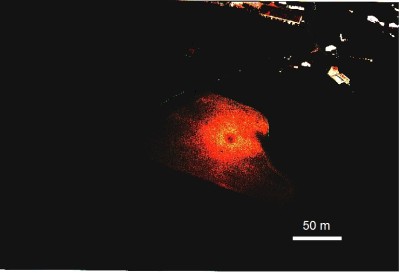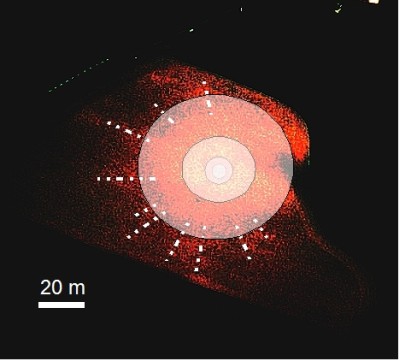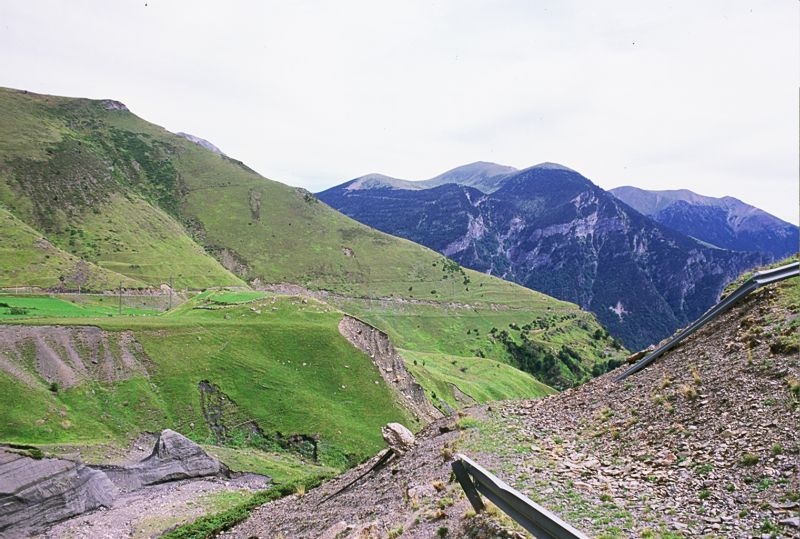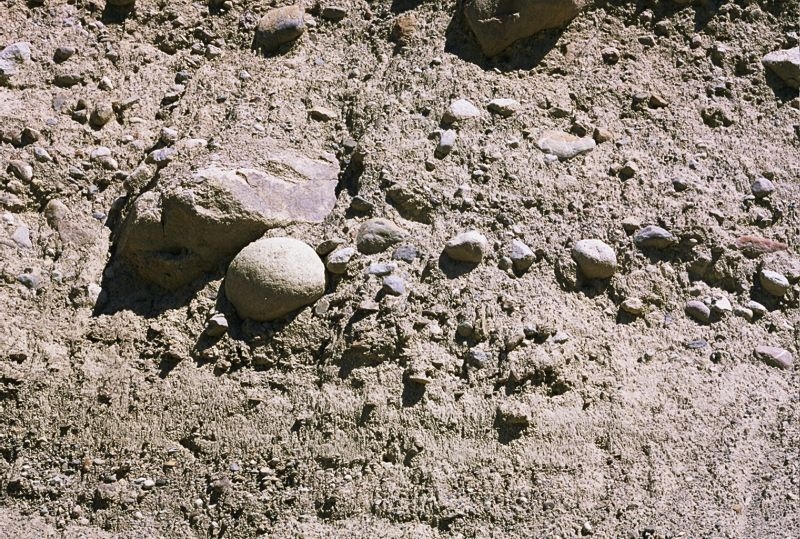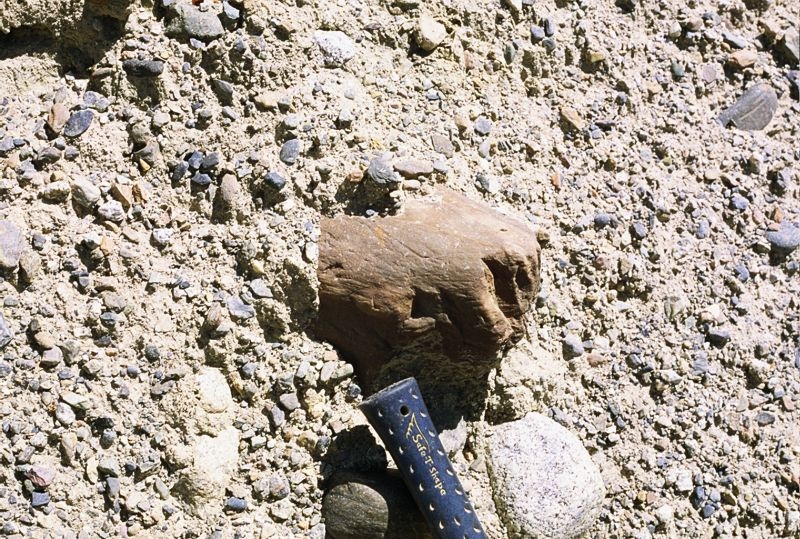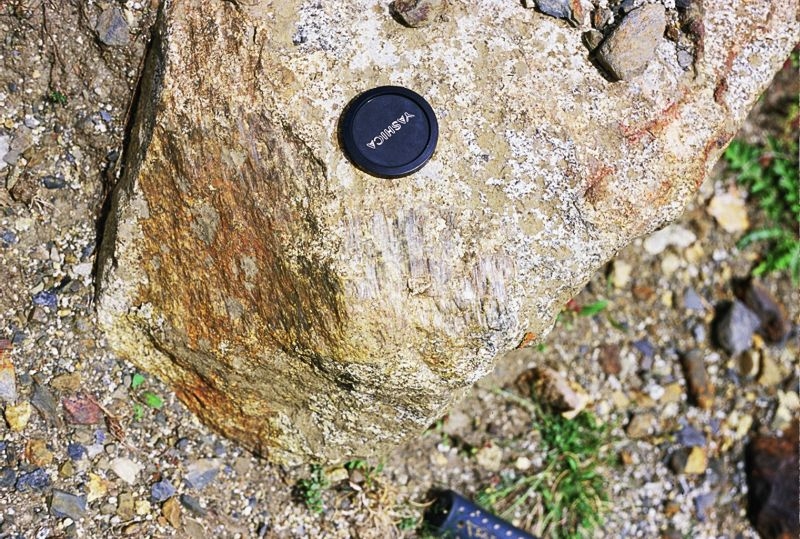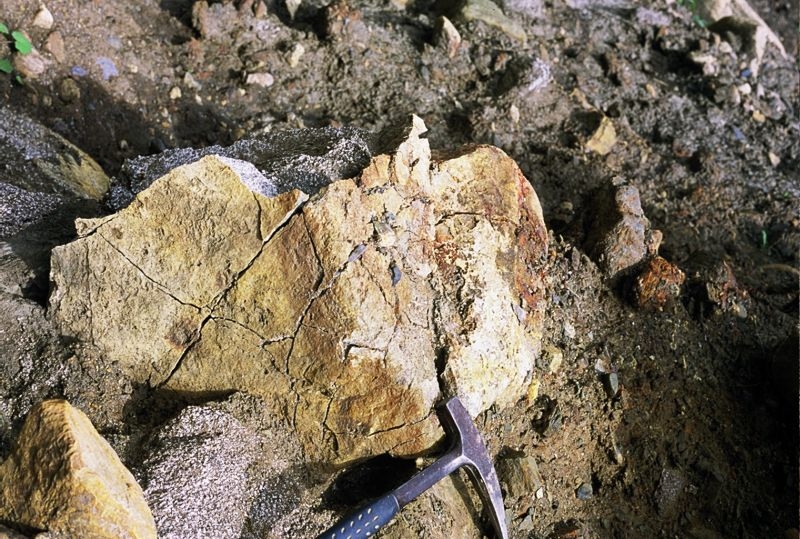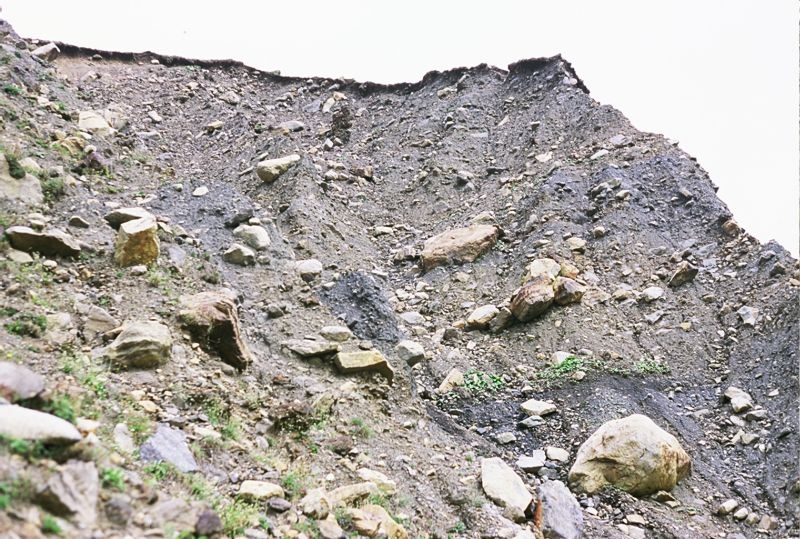The air photo (1)* originates from the northern part of the impact strewn field near Perach and shows (arrow) a crater leveled on an acre.
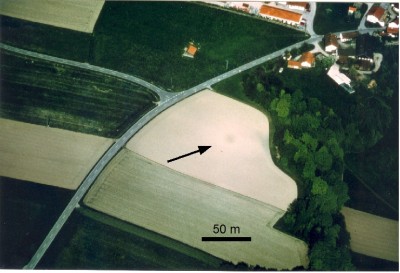 Image 1: Chiemgau impact; leveled crater near Perach
Image 1: Chiemgau impact; leveled crater near Perach
Source BLfD
By image processing, the in the original photo only adumbrated structure gains amazingly sharp contours (2) clearly exhibiting four different concentric zones (3):
- a 5 m-diameter central area (black)
- a 12 m-diameter adjoining zone (red)
- an annular Zone not quite 10 m wide and with an outer diameter of c. 30 m (yellow)
- an exterior zone (60 – 70 m diameter) displaying extensions radiating up to 50 m from the center.
The following attribution of the individual zones is suggested:
The interpretation of the central spot orients by the GPR (ground penetrating radar) measurements (Dr. Patzelt, Terrana Geophysik; inhttp://www.rssd.esa.int/SYS/docs/ll_transfers/295499_Roesler_pres.pdf and http://www.rssd.esa.int/SYS/docs/ll_transfers/295499_roesler.pdf) that have been conducted over another crater (our crater no. 004 – also see http://www.chiemgau-impakt.de/mineral.html) located in the northern part of the strewn field. The GPR soundings show prominent reflections from the crater floor possibly related with strong compaction of the underground material. Assumed this compaction also exists within the Perach crater serving as impermeable rock, a corresponding moisture penetration could optically be traceable to the surface.
The adjoining 12 m-diameter zone could represent the material from the leveling of the crater. The annular zone is suggested to reflect remnants of the original rim wall. Taken the middle of this zone to have been the location of the rim crest, a 20 m diameter of the original crater results.
Finally, the exterior zone is suggested to reflect the zone of the crater ejecta radiating up to 50 m from the crater center.
This documentation of a ring structure illustrates that alternate explanations (geologic glacial formations, anthropogenic (archeological) structures, primitive industrial sites) readily and frequently given by opponents of the Chiemgau impact and skeptics of the meteorite origin for the innumerable craters, continue to have a hard time.
In any case, it is planned to investigate the Perach leveled crater by various geophysical measuring systems trying to characterize the optical zoning in more detail physically.
* In earlier texts, the air photo was erroneously labeled an infrared image.



































